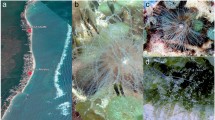Abstract
Helothermine (HLTx), a 25.5-kDa peptide toxin isolated from the venom of the Mexican beaded lizard (Heloderma horridum horridum), was found to be an inhibitor of Ca2+ channels in cerebellar granule cells of newborn rats. Macroscopic currents, carried by 10 mM Ba2+, were measured in whole-cell configuration. The toxin at the saturating dose of 2.5 μM reversibly produced an ≈67% block of the voltage-dependent Ca2+ current by a fast mechanism of action. The current inhibition and recovery were reached in less than 1 min. Inhibition was concentration-dependent, with a half-effective dose of 0.25 μM. The current block was practically voltage-independent, whereas the steady-state inactivation h ∞ was significantly affected by HLTx (≈10 mV). The toxin did not affect the activation and inactivation kinetics of the Ca2+ current. Experiments with other Ca2+ channel blockers showed that HLTx abolished ω-conotoxin GVIA-sensitive Ca2+ currents, as well as ω-AgaIVA- and dihydropyridine-sensitive Ca2+ currents. These drugs had virtually no effect when HLTx was applied first. The present results indicate that HLTx produce a high-potency blockage of the three pharmacologically distinct Ca2+ current components.
Similar content being viewed by others
References
Amico C, Marchetti C, Nobile M, Usai C (1995) Pharmacological types of calcium channels and their modulation by baclofen in cerebellar granules. J Neurosci 15:2839–2848
Aosaki T, Kasai H (1989) Characterization of two kinds of high-voltage-activated Ca-channel currents in chick sensory neurons. Differential sensitivity to dihydropyridine and omegaconotoxin GVIA. Pflugers Arch 414:150–156
Catterall WA, Striessnig J (1992) Receptor sites for Ca2+ channel antagonists. Trends Pharmacol Sci 13:256–262
De Weille JR, Schweitz H, Maes P, Tartan A, Lazdunski M (1991) Calciseptine, a peptide isolated from black mamba venom, is a specific blocker of the L-type calcium channel. Proc Natl Acad Sci USA 88:2437–2440
Fox AP, Nowycky MC, Tsien RW (1987) Kinetic and pharmacological properties distinguishing three types of calcium currents in chick sensory neurons. J Physiol (Lond) 394:149–172
Hess P, Lansman JB, Tsien RW (1984) Different modes of calcium channel gating behaviour favoured by dihydropyridine agonists and antagonists. Nature 311:538–544
Hilliard DR, Monje VD, Mintz IM, Bean BP, Nadasdi L, Ramachamdran J, Miljanich G, Azimi-Zoonooz A, McIntosh JM, Cruz LJ, Imperial JS, Olivera BM (1992) A new conus peptide ligand for mammalian presynaptic Ca2+ channels. Neuron 9:69–77
Kasai H, Neher E (1992) Dihydropyridine-sensitive and ω-conotoxin-sensitive channels in a mammalian neuroblastoma-glioma cell line. J Physiol (Lond) 448:189–209
Levi G, Aloisi F, Ciotti MT, Gallo V (1984) Autoradiographic localization and depolarization-induced release of acidic amino acids in differentiating granule cells cultures. Brain Res 290:77–86
Llinas R, Sugimori M, Lin JW, Cherksey B (1989) Blocking and isolation of a calcium channel from neurons in mammals and cephalopods utilizing a toxin fraction (FTX) from funnel-web spider poison. Proc Natl Acad Sci USA 86:1689–1693
Marchetti C, Carignani C, Robello M (1991) Voltage-dependent calcium currents in rat cerebellar granule cells. Neuroscience 43:121–133
McCleskey EW, Fox AP, Feldman DH, Cruz LJ, Olivera BM, Tsien RW, Yoshikami D (1987) ω-Conotoxin: direct and persistent blockade of specific types of calcium channels in neurons but not in muscle. Proc Natl Acad Sci USA 84:4327–4331
Mintz IM (1994) Block of Ca channels in rat central neurons by the spider toxin ω-Aga-IIIA. J Neurosci 14:2844–2853
Mintz IM, Adams ME, Bean BP (1992a) P-type calcium channels in rat central and peripheral neurons. Neuron 9:85–95
Mintz IM, Venema VJ, Swiderek K, Lee T, Bean BP, Adams ME (1992b) P-type calcium channels blocked by the spider toxin ω-Aga-IVA. Nature 355:827–829
Mochca-Morales J, Martin BM, Possani LD (1990) Isolation and characterization of helothermine, a novel toxin from Heloderma horridum horridum (Mexican beaded lizard) venom. Toxicon 28:299–309
Nobile M, Magnelli V, Lagostena L, Mochca-Morales, Possani LD, Prestipino G (1994) The toxin Helothermine affects potassium currents in newborn rat cerebellar granule cells. J Membr Biol 139:49–55
Randall A, Tsien RW (1995) Pharmacological dissection of multiple types of Ca2+ channel currents in rat cerebellar granule neurons. J Neurosci 15:2995–3012
Regan LJ, Sah DWY, Bean BP (1991) Ca2+ channels in rat central and peripheral neurons: high-threshold current resistant to dihydropyridine blockers and ω-conotoxin. Neuron 6:269–280
Schweitz H, Heurteaux C, Bois P, Moinier D, Romey G, Lazdunski M (1994) Calcicludine, a venom peptide of the Kunitz-type protease inhibitor family, is a potent blocker of high-threshold Ca2+ channels with a high affinity for L-type channels in cerebellar granule neurons. Proc Natl Acad Sci USA 91:878–882
Snutch TP, Reiner PB (1992) Ca2+ channels: diversity of form and function. Curr Opin Neurobiol 2:247–253
Swandulla FJ, Carbone E, Lux HD (1991) Do calcium channel classifications account for neuronal calcium channel diversity? Trends Neurosci 14:46–51
Tsien RW, Ellinor PT, Horne WA (1991) Molecular diversity of voltage-dependent Ca2+ channels. Trends Pharmacol Sci 12:349–354
Zhang JF, Randall AD, Ellinor PT, Home WA, Sather WA, Tanabe T, Schwarz TL, Tsien RW (1993) Distinctive pharmacology and kinetics of cloned neuronal Ca2+ channels and their possible counterparts in mammalian CNS neurons. Neuropharmacology 32:1075–1088
Author information
Authors and Affiliations
Rights and permissions
About this article
Cite this article
Nobile, M., Noceti, F., Prestipino, G. et al. Helothermine, a lizard venom toxin, inhibits calcium current in cerebellar granules. Exp Brain Res 110, 15–20 (1996). https://doi.org/10.1007/BF00241369
Received:
Accepted:
Issue Date:
DOI: https://doi.org/10.1007/BF00241369




